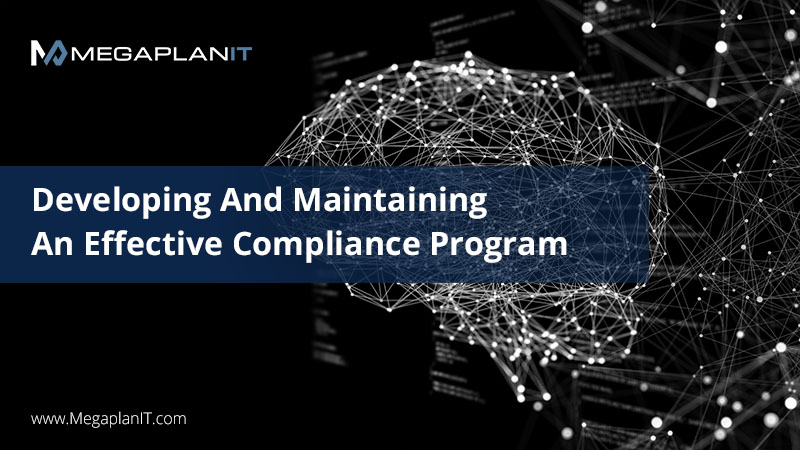
MegaplanIT
Security & Compliance
Ransomware Prevention for Financial Institutions
A Proactive Approach For Ransomware Defense
Ransomware Prevention is essential for every financial institution’s 2023 cybersecurity strategy. The financial industry receives constant attacks from cybercriminals looking to steal sensitive information and disrupt operations. Ransomware is one of the financial sector’s most dangerous and rapidly growing threats. Ransomware is malware that encrypts a victim’s files, making them inaccessible, and demands a ransom payment to restore access.
According to a study by the FBI, the financial industry is the most targeted sector for ransomware attacks, with a staggering 43% of all attacks aimed at financial institutions. These attacks can have devastating consequences for both the financial institution and its customers. According to IBM’s latest data breach report, the average ransomware breach cost was $4.54 million in 2022, and this number is only rising. https://www.ibm.com/downloads/cas/3R8N1DZJ
What if your company could simulate a ransomware attack without devastating consequences? MegaplanIT’s Ransomware Detection and Prevention Assessment Solution does just that. Our comprehensive approach emulates a ransomware intrusion through our Agentless Asset Discovery and Vulnerabilities Exposure process. The tool moves across your network, conducting tests that include initial exploitation attempts using proprietary payload, encryption, and data exfiltration testing methods.
MegaplanIT’s Ransomware Preparedness Assessment covers the following areas:
- Network and system architecture
- Security controls and policies
- Employee education and awareness
- Incident response and business continuity planning
- Backup and recovery
By identifying vulnerabilities and implementing adequate controls, financial institutions can reduce the risk of a successful ransomware attack and minimize the impact of an attack if it does occur.
Here are five steps your business can take to boost your ransomware prevention strategy:

Step 1. Conduct a comprehensive ransomware preparedness assessment:
A successful ransomware prevention plan starts with identifying critical systems and data, assessing current security to identify vulnerabilities, identifying how ransomware can enter the organization, evaluating the ability to detect, respond and recover from an attack, and making recommendations for improvement based on the findings.
- Identify the critical systems and data. Identify the methods and data essentials to business operations.
- Conduct a thorough assessment of the current security state to identify vulnerabilities and weaknesses in the organization’s systems. This assessment should cover network and system architecture, security controls and policies, employee education, awareness, incident response, and business continuity planning.
- Identify how ransomware can enter the organization’s systems, such as through phishing scams, unpatched software, or unsecured third-party vendors.
- Evaluate your organization’s ability to detect a ransomware attack, respond to it, and recover from it. We recommend assessing the effectiveness of incident response and business continuity plans, backup, and recovery procedures and testing the incident response plan.
- Based on the assessment findings, get recommendations for improvement to the organization’s systems and procedures. For example, we recommend implementing new security controls, updating policies, and providing employee education and training.
Step 2. Implement adequate security controls and policies:
This includes firewalls, antimalware defenses, intrusion detection/prevention systems, and access controls.
- Implement firewalls and intrusion detection/prevention systems. These will help to prevent unauthorized access to the organization’s strategies and detect any suspicious activity.
- Deploy antimalware defenses such as Endpoint Detection and Response (EDR) tools to help detect, prevent, and remove any malware that may have entered the organization’s systems.
- Implement access controls such as user authentication and role-based access controls to ensure that only authorized personnel can access sensitive data and systems.
- Encrypt sensitive data such as financial and personal information to protect it from unauthorized access.
- Keep all software and systems up to date with the latest security patches to address known vulnerabilities and minimize the risk of a ransomware attack.
- Provide regular security awareness training to employees on identifying and avoiding phishing scams, properly handling sensitive data, and reporting suspicious activity.
- Implement multi-factor authentication to protect against unauthorized access to sensitive systems and data.
- Implement security monitoring and logging to detect potential security breaches and have a record of any suspicious activity.
Step 3. Educate employees on ransomware prevention and best practices for avoiding it:
This includes regular training to identify and avoid phishing scams, properly handle sensitive data, and report suspicious activity.
MegaplanIT’s Security Awareness Training program ensures all your employees are up to date on the latest threats and know how to protect themselves and your company. When it comes to Ransomware Prevention, Our training includes short 1 minute videos, games, and regular reminders about how to spot and avoid ransomware attacks. We believe that a well-informed and educated team is critical in keeping a company safe from these dangerous cyberattacks. So make sure to keep the training mandatory for all employees and encourage everyone to stay vigilant and report any suspicious activity.
- Develop a comprehensive training program that covers the basics of ransomware, how it spreads, and how to identify and avoid it.
- Make the training mandatory for all employees, including new hires and contractors.
- Integrate different training methods, such as e-learning, classroom-based training, and webinars that cater to different learning styles.
- Encourage employee engagement by making the training interactive and providing opportunities for employees to ask questions and provide feedback.
- Encourage management to lead by example and follow the best practices in their day-to-day activities.
Step 4. Develop an incident response and business continuity plan
This plan should include procedures for responding to a ransomware attack, such as isolating affected systems, restoring from backups, and communicating with customers.
- Identify key personnel responsible for responding to a ransomware attack, including a designated incident response team.
- Develop clear and comprehensive procedures for identifying, containing, and mitigating the effects of a ransomware attack.
- Establish precise and reliable communication channels for the incident response team and key personnel to communicate during an incident.
- Create a plan for recovering data that has been encrypted or lost during a ransomware attack. This plan should include regular backups and testing of backups to ensure they are recoverable.
- Develop a plan for maintaining essential business functions during and after a ransomware attack.
- Test the incident response plan regularly to ensure that it is effective and that key personnel understands their roles and responsibilities.
- Continuously update the incident response and business continuity plan to align with the evolving threat landscape and any changes to the organization’s systems or environment.
Step 5. Regularly test and evaluate the implemented controls:
Regular testing and evaluation of the implemented controls are crucial for identifying and addressing any weaknesses or vulnerabilities introduced over time. Additionally, by regularly testing and evaluating the implemented controls, financial businesses can ensure that they are effective and aligned with the current threat landscape, reducing the risk of a successful ransomware attack and minimizing the impact of an attack if it does occur.
A financial business can regularly test and evaluate the implemented controls by following these steps:
- Conduct regular vulnerability assessments: Regularly assess the organization’s systems and networks to identify any vulnerabilities that attackers could exploit.
- Conduct penetration testing: Regularly conduct penetration testing to simulate a real-world attack and evaluate the effectiveness of the organization’s security controls.
- Monitor and analyze security logs: Regularly monitor and analyze security logs to detect any suspicious activity or potential security breaches.
- Audit security policies and procedures: Regularly audit the organization’s security policies and procedures to ensure they are current and influential.
- Review incident response and business continuity plans: Regularly review the organizations and business continuity plans to ensure they are current and influential.
- Conduct regular employee security training: Regularly conduct employee security training to ensure that employees understand the current threat landscape and best practices for avoiding ransomware attacks.
- Conduct a simulated ransomware attack: Test the organization’s incident response and business continuity plan and identify any areas that need improvement.

Choosing MegaplanIT As Your One Trusted Partner
Don’t let a ransomware attack catch you off guard, Have ransomware prevention in your 2023 strategy. Take control of your cybersecurity with MegaplanIT’s Ransomware Detection and Prevention Assessment Solution. Our comprehensive approach emulates a real-life ransomware attack and exposes vulnerabilities in your network, so you can take action before it’s too late. With our step-by-step remediation process, you’ll receive a roadmap to reduce the risk of a future attack and protect your business.
Our innovative IT security and compliance solutions are designed to deliver customized, cost-effective service on time—because your priorities are our priorities. With a highly qualified team of PCI-DSS QSAs, Penetration Testers, and Information Security Consultants here at MegaplanIT, we will assess your unique company and business environment and design a path to security that will fit all of your needs.
The time to act is now before it’s too late. So schedule your Ransomware Prevention Assessment today and SECURE your business for tomorrow.
Share this post
Subscribe To Our Newsletter
Most Popular
Compliance Services
Industry Leading Certified Experts




Subscribe
Subscribe To Our Newsletter & Stay Up-To-Date
Explore Our Blogs
Whitepaper | 10 min Read

Developing An Effective Compliance Program
This whitepaper provides organizations with a path forward. We will walk through aspects of an effective compliance program and how it can be valuable to your business. We will also outline critical steps towards developing and implementing a useful and effective Compliance Program.
New Service Offering | Contact Us

Ransomware Preparedness Assessment
As new vulnerabilities emerge in response to ongoing geopolitical threats, are you confident that your organization could defend against a ransomware attack? If not or if you are unsure, MegaplanIT is offering a Ransomware Readiness Assessment free of charge for up to 50 Systems.
ResourceGuide | 8 min Read

Cybersecurity Roadmap For 2022
Companies need to be aware of their current state, where they need improvement, and how to be proactive moving forward. Dialing in on the key elements your organization will need to succeed is a great starting point to having a full-fledged plan in place, and it all comes down to the fundamentals.

Make Our Team, Your Team!
Our innovative IT security and compliance solutions are designed to deliver customized, cost-effective service on time—because your priorities are our priorities. With a highly qualified team of PCI-DSS QSAs, Penetration Testers, and Information Security Consultants here at MegaplanIT, we will assess your unique company and business environment and design a path to security that will fit all of your needs.













